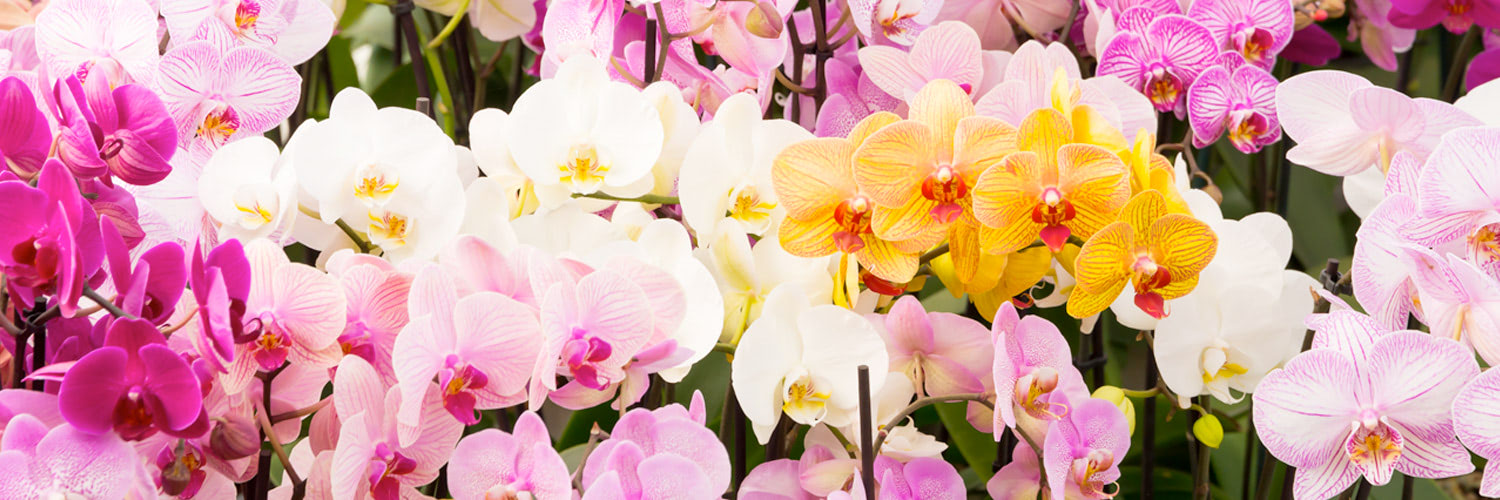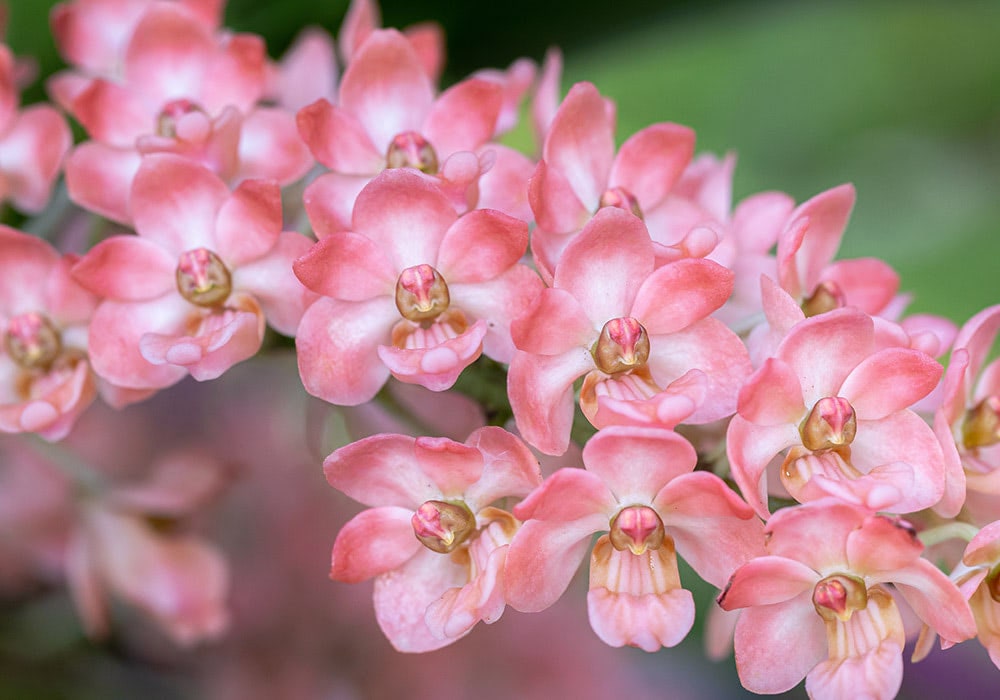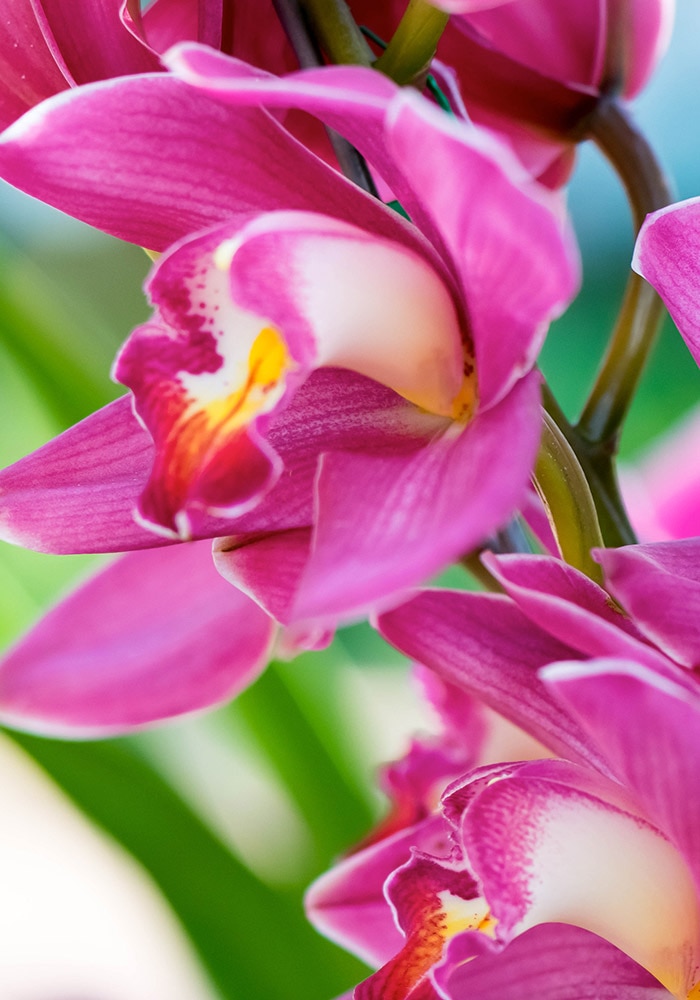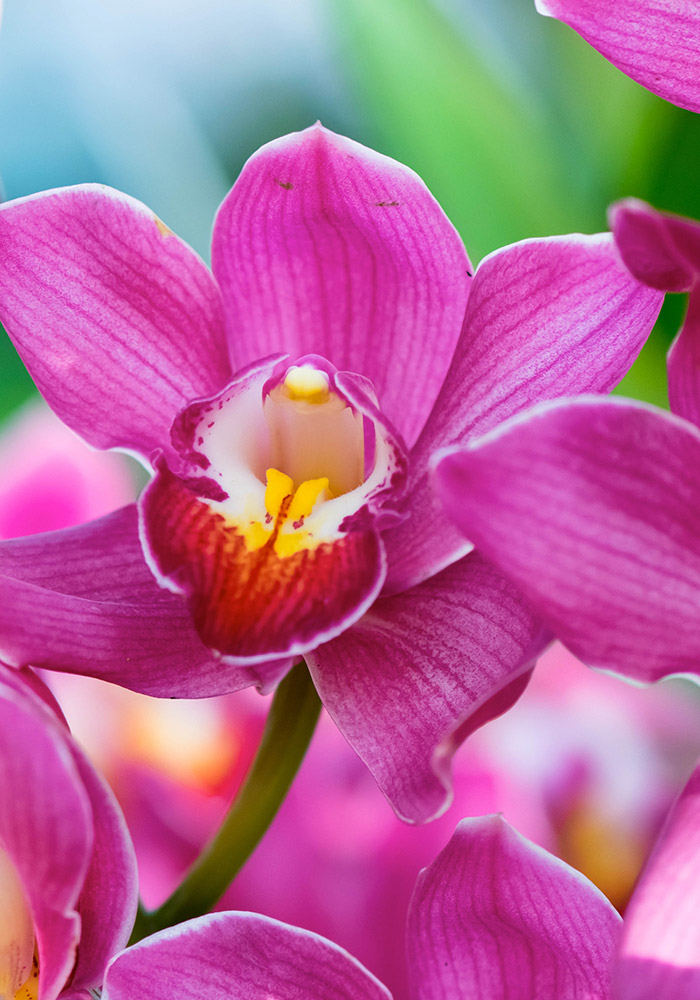

About the Orchid
Orchids were discovered between 26 and 110 million years ago, making them the oldest flowering plant in the world. As the origin story goes, a peculiar pollinating bee got stuck in Miocene amber, and when he was found, it was determined that the pollen he was carrying was from an orchid. Today, orchids possess a mysterious and captivating allure. They were once a rare, exotic, and beloved bloom, which has contributed to their modern grandeur and luxe. Orchids are rooted in rich, vibrant meaning and symbolism and have made their mark on various cultures throughout history.
Characteristics of Orchids
While over 25,000 species belong to the orchid family, also called Orchidaceae, these flowering plants have common characteristics that make it easy to identify them as orchids. Found all across the globe, orchids contain three petals, three sepals, one column, and a single protruding lip, called a labellum. Labellums are the part of the orchid where pollinating insects sit and utilize as a landing pad. One of the most telling characteristics of orchids is their unmistakable symmetry. Unlike many flowering plants, orchids can be divided down the center to create two identical parts.
Orchid Name Meaning
Due to its long tuberous roots, the name "orchid" was derived from the Greek word "orchis," which translates to "testicle." Furthermore, the Ancient Greeks heavily associated orchids with fertility, and when a woman was pregnant, they would use an orchid to determine the sex of their unborn child. If the orchid's tuberous roots were large, it was believed they would have a boy, and if the roots were shorter, it was predicted that they would give birth to a girl.
Fun Facts About the Orchid
- The Victorian Age experienced "Orchid Delirium" as the rich became obsessed and infatuated with collecting orchids and admiring their rare beauty. This began after Charles Darwin's Fertilization of Orchids was published in 1862.
- "Dendrobium Orchid" translates to "life in a tree" in Greek.
- Ancient Chinese medicine utilizes orchids to treat coughs, lung disease, kidney ailments, eye disease, and stomach deficiencies.
- The Greek word "kymbos," meaning boat, describes the boat-like shape of the Cymbidium Orchid's lower lip.
- Aztec warriors created an elixir from vanilla orchids and chocolate to promote great strength and power.
- In the mid-1750s, the founder of Phalaenopsis Orchids, Peter Osbeck, mistook a group of these flowering plants as a swarm of moths. Today, this particular orchid is also known as "the moth orchid" and is a classic houseplant.

Orchid Symbolism
Overall, orchids are a symbol of love, fertility, refinement, thoughtfulness, charm, and beauty. However, each colored orchid also carries additional symbolism based on its brilliant hue.
Blue orchids represent mindfulness, spirituality, and rarity. Green orchids mean harmony, health, longevity, and good fortune. Purple orchids are synonymous with royalty, admiration, and wealth. Yellow orchids symbolize friendship, optimism, and new beginnings. White orchids are connected to purity, grace, and innocence. Orange orchids are linked to creativity, positivity, success, and confidence. Lavender orchids stand for elegance, sophistication, and feminine beauty. Pink orchids illustrate love, joyfulness, and femininity. Red orchids reflect courage, passion, and love.
Popular Orchid Varieties
Among the thousands of orchid varieties, the most popular are Cymbidium Orchids, Phalaenopsis Orchids, Dendrobium Orchids, and Oncidium Orchids.

Orchid Occasions
Orchids are full of deep symbolism, inspiring colors, and historical meaning, proving worthy candidates to celebrate almost any occasion. Weddings, birthdays, Mother's Day, anniversaries, "congratulations," just because, baby showers, bridal showers, housewarming, and more are all appropriate moments to commemorate and honor with orchids.




